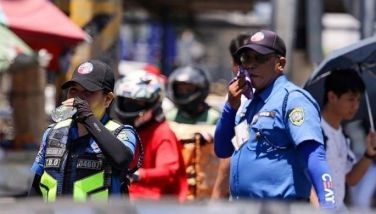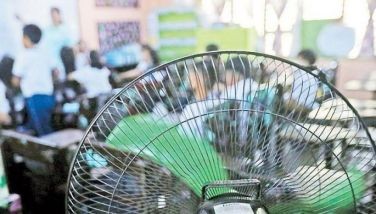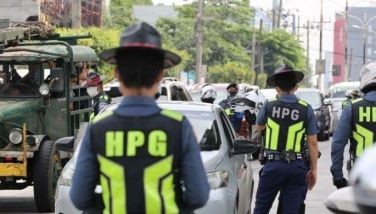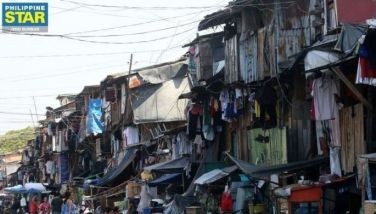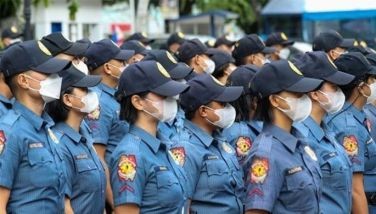In charts: How the Philippines fares in Southeast Asia
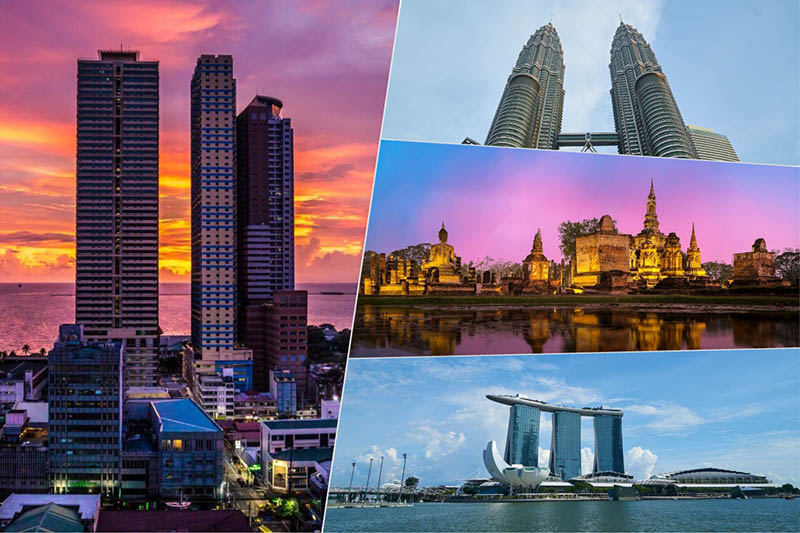
One bloc, numerous attributes. Southeast Asia is one of the fastest growing regions of the world, but some countries are faring better than the rest.
MANILA, Philippines — A region born out of security concerns 50 years ago,Southeast Asia has managed to maintain its stability for decades, making the ASEAN bloc a bright spot for social and economic prosperity.
The Philippines, one of the bloc's founding states, chairs this year's ASEAN summits. Members of the 10-nation regional bloc take turns at chairmanship.
From November 11 to 14, 21 world leaders—along with the United Nations chief—will sit down for talks in Manila for the 31st ASEAN meet.
SPECIAL COVERAGE: ASEAN Summit in the Philippines
One of the major issues expected to be tackled is the South China Sea dispute, which has dogged many ASEAN member states for years. Also high on the agenda are fighting terrorism and improving trade relations, among others.
To gauge the competitiveness of this year's chair, Philstar.com listed down nine interesting features comparing the Philippines to its Southeast Asian neighbors.
Philippines is 2nd most populated ASEAN country; Indonesia ranks 1st
With a total of 103 million people living in the country, the Philippines was the second nation with the highest population in Southeast Asia in 2016, data from the World Bank show.
Topping the list was Indonesia with a total population of 261 million. Meanwhile, Brunei, which was home to 423,000 people, was the least populated ASEAN country.
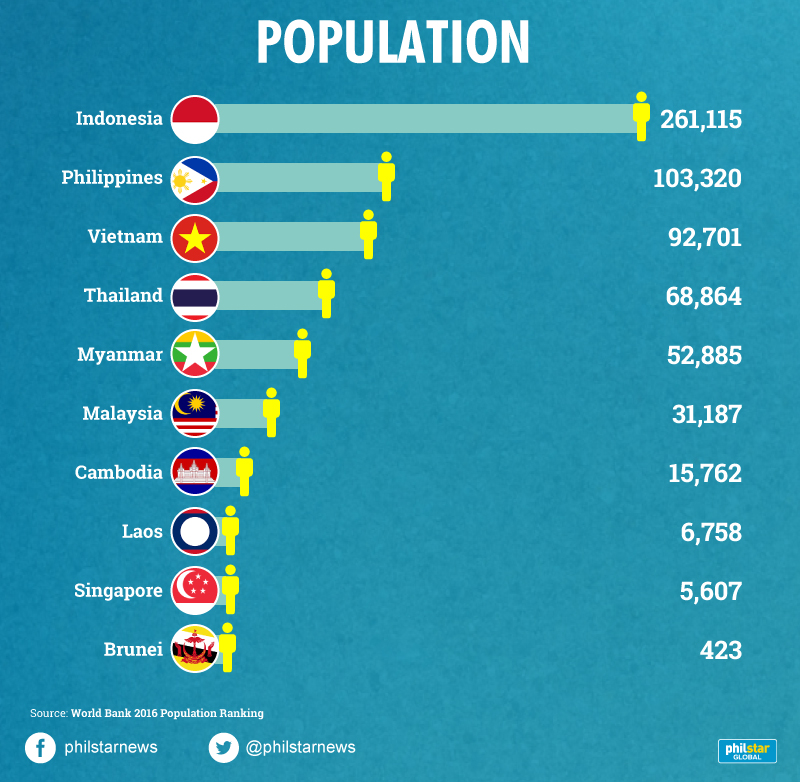
Philippines ranks 4th in developing human capital; Cambodia takes last spot
Compared to its peers in the region, the Philippines ranked fourth in terms of human capital with a score of 64.36, according to the World Economic Forum's Global Human Capital Index report 2017.
WEF's report defines "human capital" as the knowledge and skills people possess that enable them to create value in the global economic system. It ranks economies on how well they are developing their human capital across four thematic sub-indices: capacity; deployment; development; and know-how.
Taking the index's top spot was Singapore, which bagged a score of 73.28. On the other hand, Cambodia, which logged a score of 57.28, was ranked at the bottom of the roster.
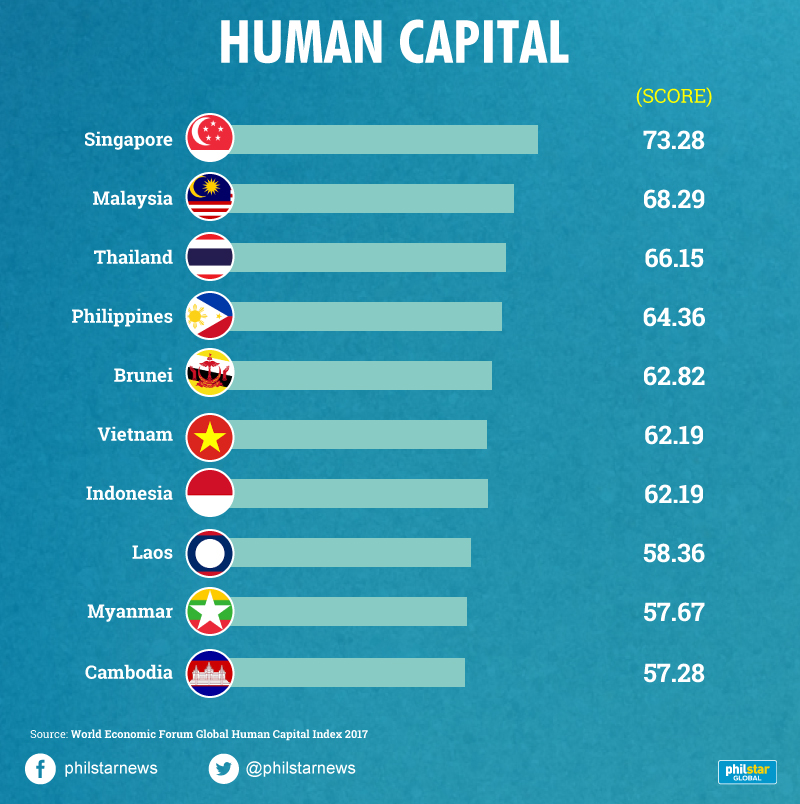
Philippines is top country in terms of gender parity; Malaysia scored the lowest
When it comes to progress in closing gender gaps across industry talent pools and occupations, the Philippines ranked first among ASEAN member-states with a score of 0.790, WEF said in its 2017 Global Gender Gap Report.
Laos came second with a score of 0.703. Meanwhile, despite its steady progress on closing its political empowerment gender gap, Malaysia was the worst performing Southeast Asian nation in the index.
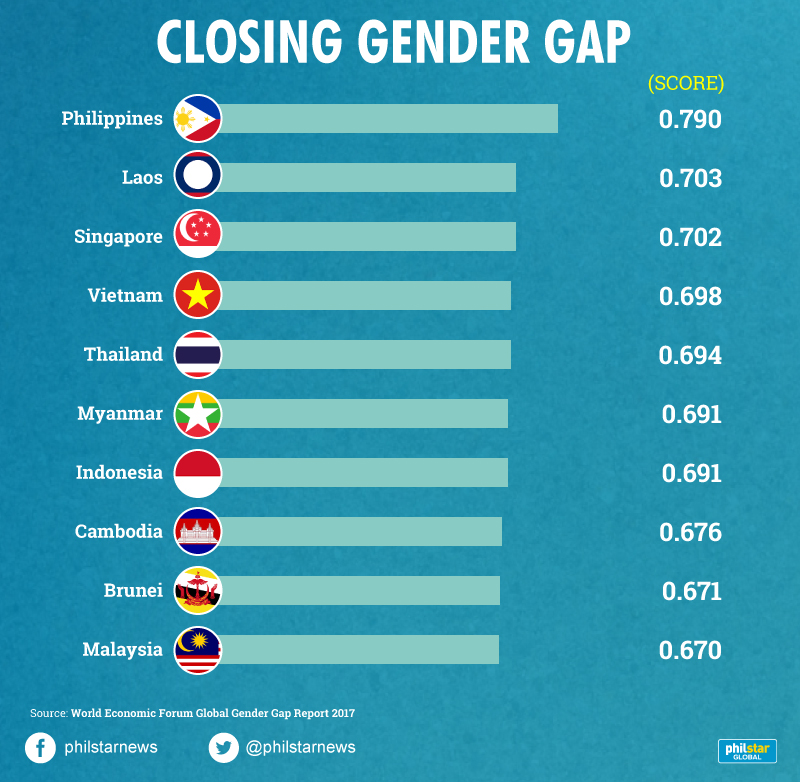
Philippines is 3rd largest economy in ASEAN based on GDP; Indonesia, Thailand biggest
Indonesia's gross domestic product totaled $932 billion in 2016 while Thailand placed second at $406 billion, World Bank reported.
This was followed by the Philippines, Singapore and Malaysia at $304 billion, $297 billion and $296 billion, respectively. Brunei has the smallest economy based on GDP at $11 billion.
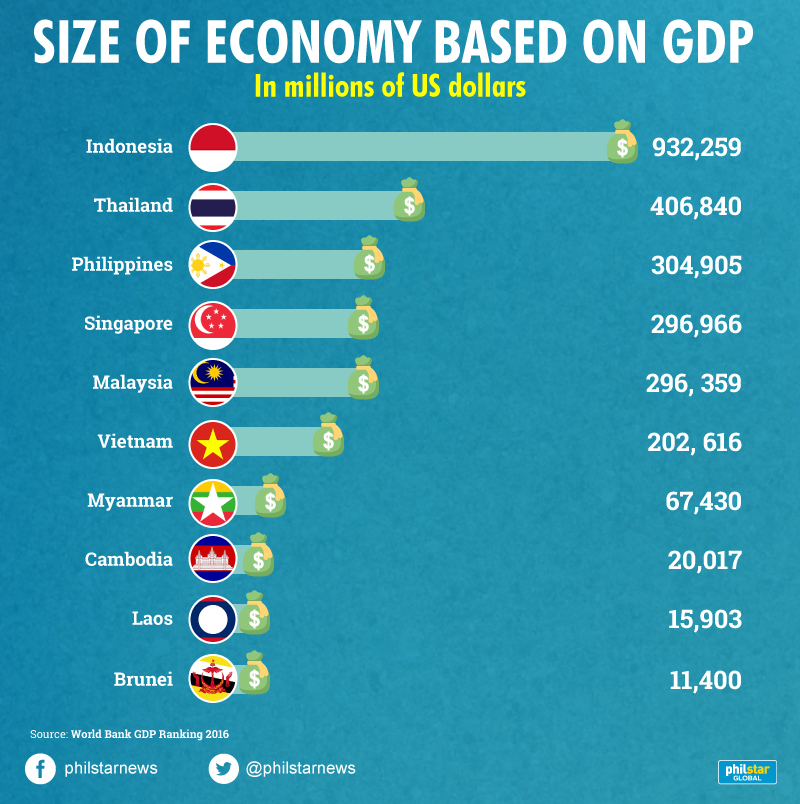
Singapore bags highest score in terms of access to physical infrastructure; Philippines ranks 5th
When it comes to access to physical infrastructure, the Philippines ranked 5th among Southeast Asian countries with a score of 0.336, according to the UN Economic and Social Commission for Asia and the Pacific's Asia-Pacific Countries with Special Needs Development Report 2017.
UN ESCAP's report captures the availability, quality and type of physical infrastructure investments covering transport, energy, information and communications technology, and water supply and sanitation.
The Philippine score was above Indonesia's 0.278, Lao People's Democratic Republic's 0.225, Myanmar's 0.198, and Cambodia's 0.186.
However, it falls below Thailand's 0.418, Vietnam's 0.419, Malaysia's 0.502, and Singapore's 0.708. Brunei was not included in the ranking.
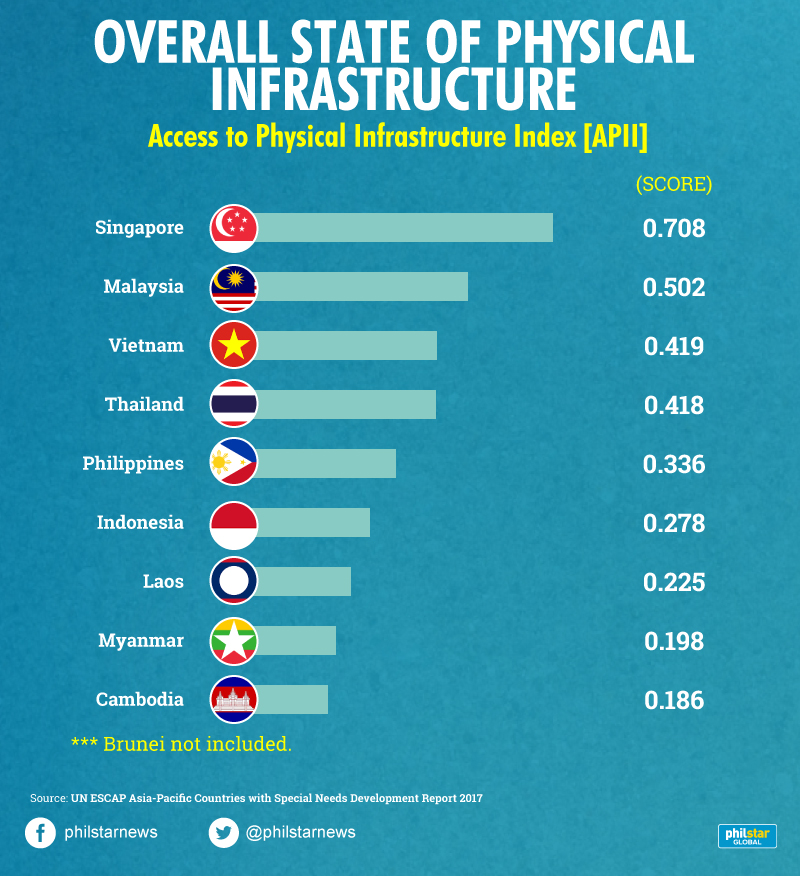
Singapore has fastest fixed broadband speed; Myanmar slowest
According to Speedtest's Global Index for October 2017, Singapore has the fastest broadband internet with a download speed of 148.62 mbps.
Meanwhile, the Philippines was ranked 7th with a download speed of 13.5 mbps followed by Cambodia, Laos, and Myanmar at 11.46 mbps, 9.31 mbps, and 7.40 mbps, respectively.
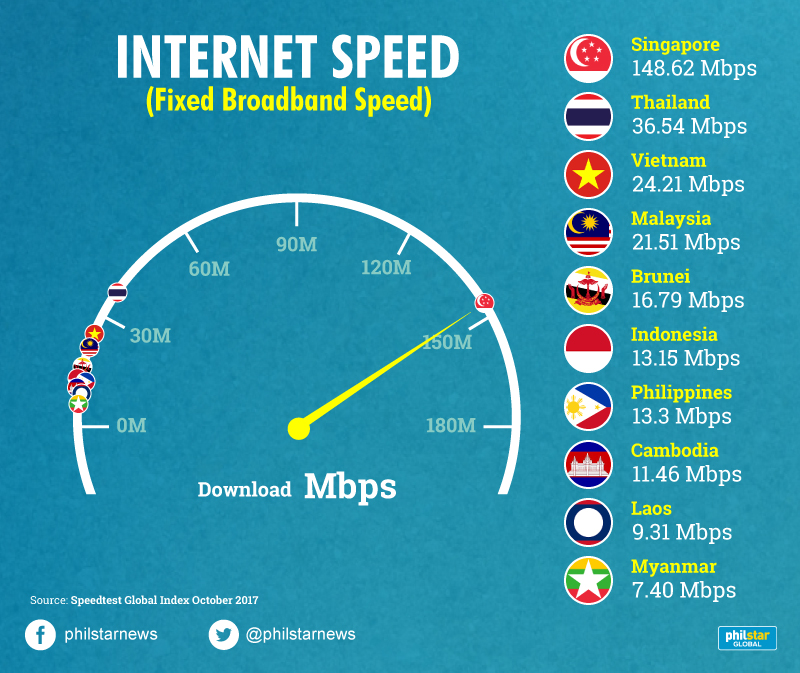
Singapore is least corrupt in the region; Philippines takes middle spot
In terms of level of corruption, the Philippines settled at the middle of the ranking, according to Transparency International's Corruption Perceptions Index 2016.
The Philippines got a score of 35 that was well below the midpoint of the report's scale of 0 (highly corrupt) to 100 (very clean).
Singapore scored the highest at 84 while Cambodia, which received a score of 21, was the ASEAN country with most corrupt public sectors.
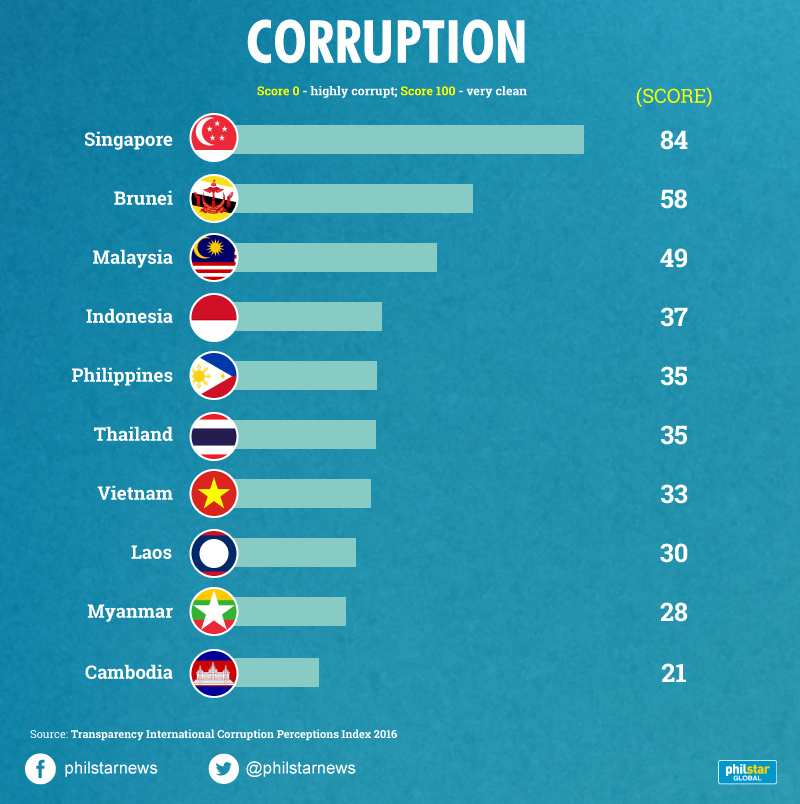
Philippines is least peaceful country in ASEAN
The Philippines is the least peaceful nation in the regional bloc with a score of 2.555, data from Vision of Humanity's Global Peace Index 2017 revealed.
The report used 23 qualitative and quantitative indicators measured the state of peace using three thematic domains: the level of societal safety and security; the extent of ongoing domestic and international conflict; and the degree of militarization.
On the other hand, Singapore is the most peaceful Southeast Asian nation with a score of 1.534. Brunei was not ranked but it was among the top ten per capita military spending countries globally as per Stockholm International Peace Research Institute 2015 data.
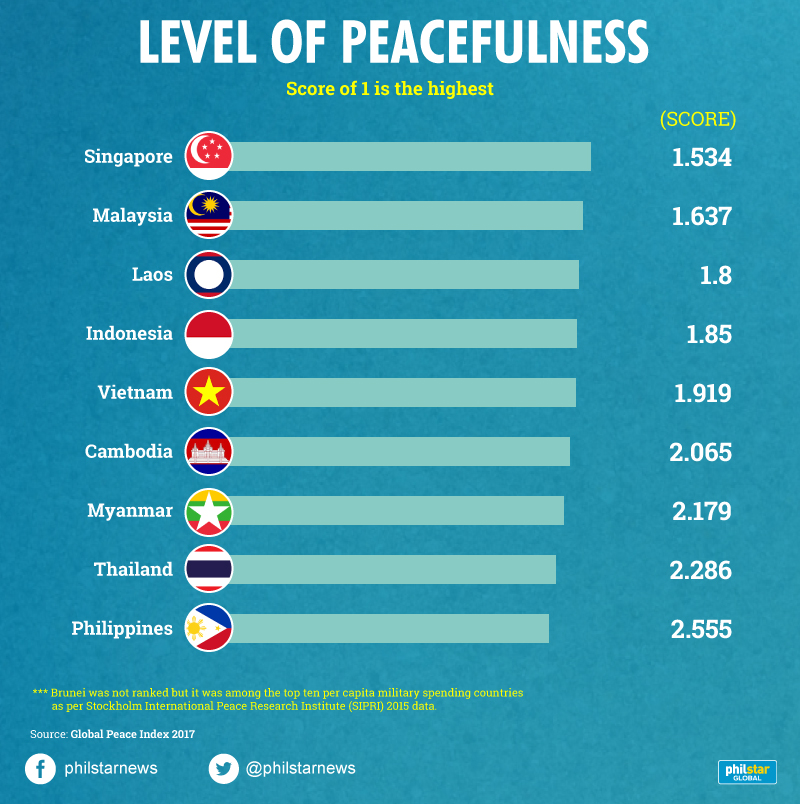
Indonesia, Philippines most democratic countries; Laos an 'authoritarian regime'
Indonesia and the Philippines are the most democratic nations compared to the rest of ASEAN with scores of 6.97 and 6.94, respectively, according to Economist Intelligence Unit's Democracy Index 2016.
The Democracy Index was based on five categories: electoral process and pluralism; civil liberties; the functioning of government; political participation; and political culture. Based on their scores, each country is then itself classified as one of four types of regime: "full democracy;" "flawed democracy;" "hybrid regime;" and "authoritarian regime."
Both Indonesia and the Philippines were under "flawed democracy." Meanwhile, no ASEAN member-state made it to the "full democracy" group.
Laos came last with a score of 2.37 that was classified by EIU as "authoritarian." The Sultanate of Brunei was not included in the ranking.
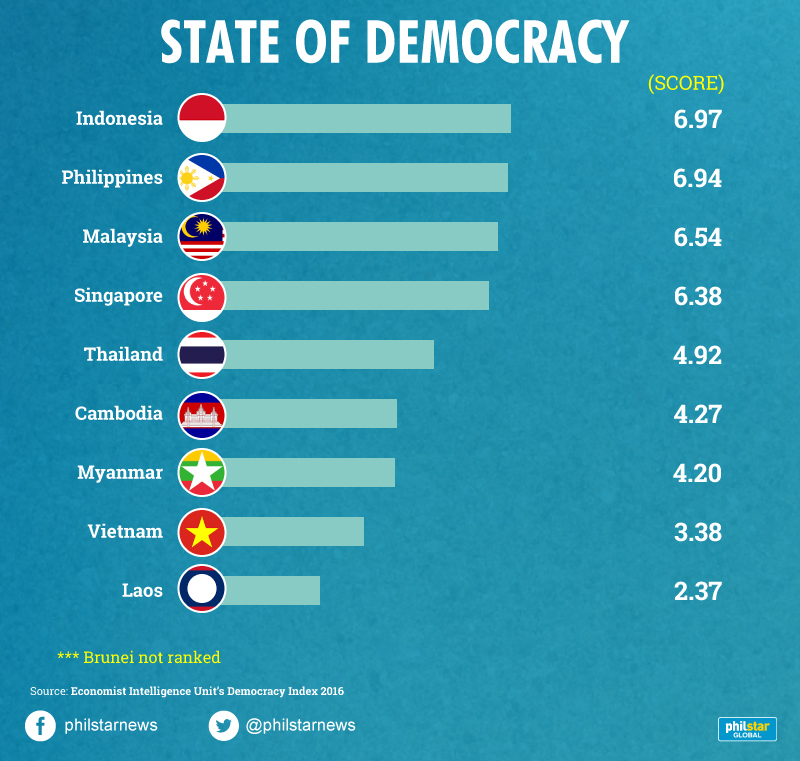
- Latest
- Trending















